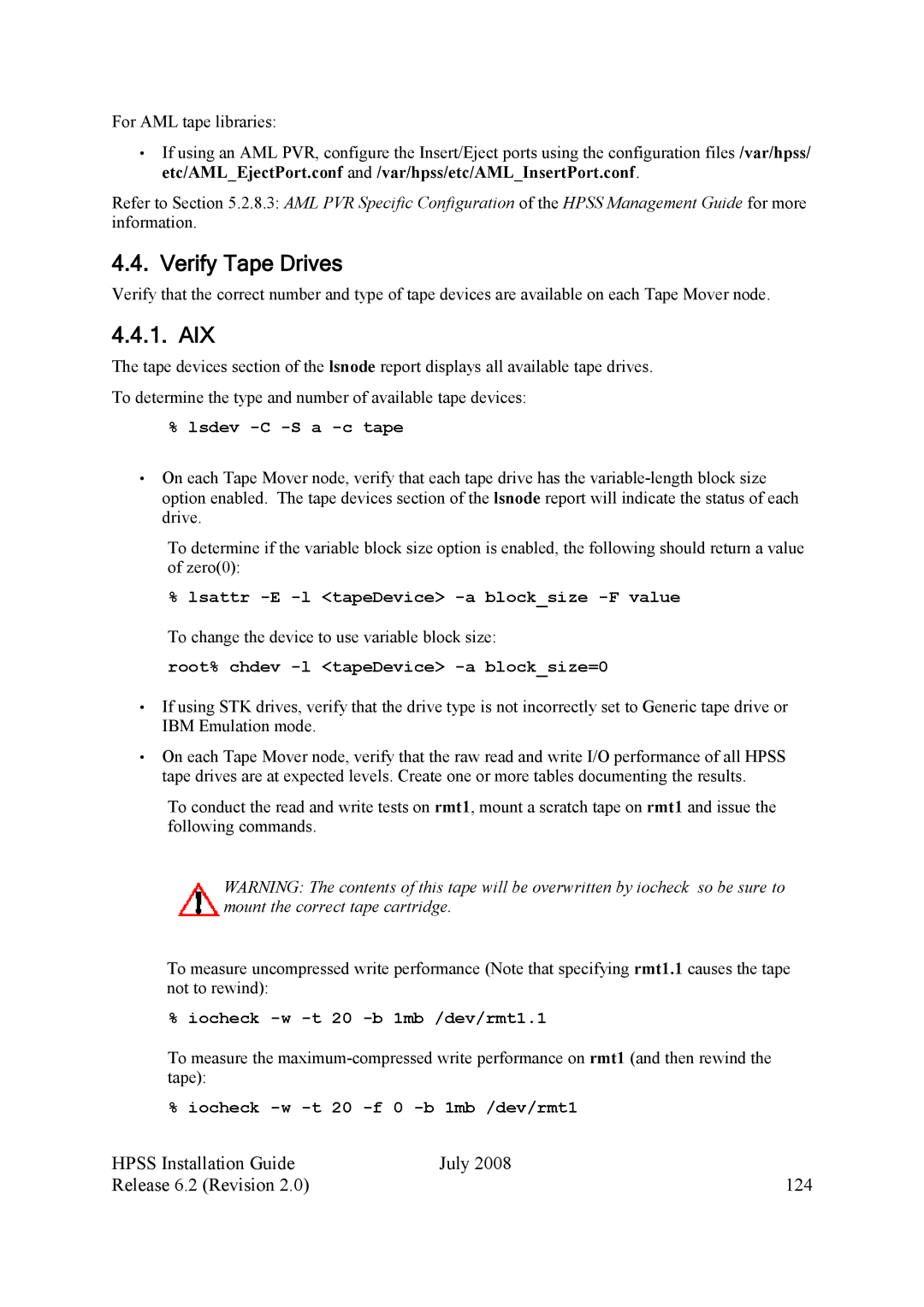For AML tape libraries:
•If using an AML PVR, configure the Insert/Eject ports using the configuration files /var/hpss/ etc/AML_EjectPort.conf and /var/hpss/etc/AML_InsertPort.conf.
Refer to Section 5.2.8.3: AML PVR Specific Configuration of the HPSS Management Guide for more information.
4.4. Verify Tape Drives
Verify that the correct number and type of tape devices are available on each Tape Mover node.
4.4.1. AIX
The tape devices section of the lsnode report displays all available tape drives. To determine the type and number of available tape devices:
%lsdev -C -S a -c tape
•On each Tape Mover node, verify that each tape drive has the
To determine if the variable block size option is enabled, the following should return a value of zero(0):
% lsattr
To change the device to use variable block size:
root% chdev -l <tapeDevice> -a block_size=0
•If using STK drives, verify that the drive type is not incorrectly set to Generic tape drive or IBM Emulation mode.
•On each Tape Mover node, verify that the raw read and write I/O performance of all HPSS tape drives are at expected levels. Create one or more tables documenting the results.
To conduct the read and write tests on rmt1, mount a scratch tape on rmt1 and issue the following commands.
WARNING: The contents of this tape will be overwritten by iocheck so be sure to mount the correct tape cartridge.
To measure uncompressed write performance (Note that specifying rmt1.1 causes the tape not to rewind):
% iocheck
To measure the
% iocheck
HPSS Installation Guide | July 2008 |
Release 6.2 (Revision 2.0) | 124 |
